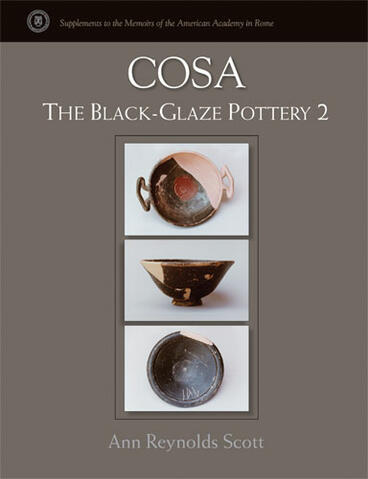Cosa
The Black-Glaze Pottery 2
New and reconsidered black-glaze pottery from the Roman Republican colony of Cosa
Description
This study of an important class of ceramics from the key coastal colonial site of Cosa in southwest Tuscany documents the rise of republican Rome to dominance in central Italy in the third and second centuries B.C. The town and territory of Cosa constitute one of the most extensively explored sites of the Roman republican period on the Italian peninsula. Excavation and survey work by the American Academy in Rome and others at Cosa over the past half century have greatly enriched our knowledge of the development of public and domestic urban and rural architecture, the organization and exploitation of the resources of the countryside, and the patterns of economic exchange to which they testify. These latter are particularly evident in the varieties of imported and locally made black-glaze pottery that have been recovered in the excavations. While we tend to think of the ubiquitous Greco-Italic amphorae as the commercial indicators par excellence of mid to late republican Italy, this class of tableware is no less important for understanding both the maritime and inland routes of exchange.
"Ann Scott presents our best picture of Late Republican black-glaze in central Italy from the third through the mid-first century B.C. In Cosa: The Black-Glaze Pottery 2, she reassesses and updates the material published fifty years ago by Doris Taylor as well as presenting more recent deposits of black glazed pottery from Cosa."
---Shelley Stone, Professor of Art History, California State University, Bakersfield
"This admirable study will quickly establish itself as the classic treatment of a topic of central importance for the archaeology of central Italy in the Roman republican period."
---Bernard Frischer, Director, Institute for Advanced Technology in the Humanities, and Professor of Art History and Classics, University of Virginia
Ann Reynolds Scott is Lecturer in Classics at Ursinus College.

